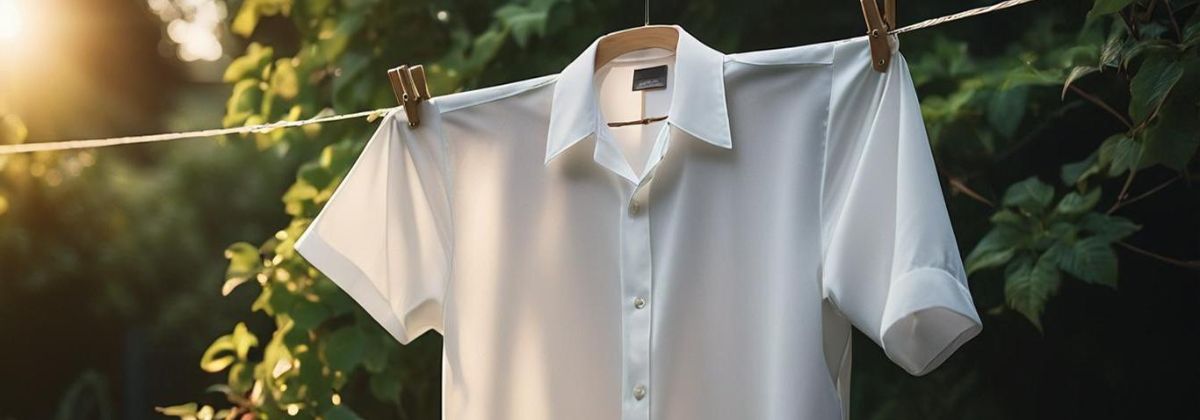05 Apr Bleach in Laundry: Keeping Your Whites Bright and Stains at Bay
Bleach is a quintessential household cleaning agent, revered for its potent stain-removing and whitening properties in laundry care. Whether battling stubborn stains or reviving dingy whites, bleach has long been a trusted ally in the laundry room. However, understanding the nuances of bleach, including its types, usage, and safety precautions, is vital to ensure effective and safe laundry practices. This comprehensive guide delves into bleach in laundry, exploring its various forms, how it works, safety considerations, and its impact on fabrics and the environment.
Benefits of Using Bleach in Laundry
- Stain Removal: Bleach is renowned for its exceptional stain-removing capabilities. Whether tackling stubborn coffee spills, grass stains, or the remnants of last night’s spaghetti dinner, bleach can effectively break down and lift even the toughest stains, leaving your garments pristine and spotless.
- Whitening Whites: Dingy whites are no match for the brightening power of bleach. With a splash of bleach in your laundry cycle, you can breathe new life into faded or yellowed white fabrics, restoring their brilliance and freshness with each wash.
- Disinfection: Beyond its stain-fighting prowess, bleach is a potent disinfectant capable of annihilating germs, bacteria, and other harmful pathogens lurking on clothes. This is particularly beneficial for kitchen towels, bath linens, and undergarments, where cleanliness is paramount.
- Odour Elimination: Bleach doesn’t just mask odours; it eradicates them at their source. By targeting odour-causing bacteria, bleach ensures that your laundry emerges from the wash, smelling as clean and fresh as it looks, banishing unwanted smells with ease.
- Versatility: Bleach is compatible with a wide range of fabrics, from cotton to polyester to linens, making it a versatile solution for all your laundry needs. Whether you’re washing delicate linens or durable denim, bleach can be safely incorporated into your routine, delivering consistent results across the board.
- Cost-Effectiveness: Compared to specialized stain removers or alternative laundry treatments, bleach is a budget-friendly option that offers maximum bang for your buck. A small amount of bleach can go a long way in revitalizing your wardrobe, making it a cost-effective choice for savvy laundry enthusiasts.
- Time-Saving: With bleach in your arsenal, you can bid farewell to tedious pre-soaking or scrubbing sessions. Its powerful formula efficiently lifts stains and brightens fabrics, streamlining the laundry process and saving precious time and effort.
Types of Bleach
- Chlorine Bleach: Chlorine bleach, often sodium hypochlorite, is a potent disinfectant and whitening agent. It’s highly effective at removing tough stains, sanitizing fabrics, and brightening whites. Chlorine bleach is commonly used in laundry for its unparalleled stain-fighting abilities. However, using chlorine bleach with caution is essential, as it can weaken fabrics and cause colour loss if not used properly.
- Oxygen Bleach: Oxygen bleach, also known as colour-safe or oxygenated bleach, is a gentler alternative to chlorine bleach. It contains compounds such as hydrogen peroxide or sodium percarbonate, which release oxygen when water dissolves. Oxygen bleach is suitable for coloured fabrics and delicate materials since it’s less likely to cause fading or damage. It effectively removes stains and brightens fabrics without the harshness of chlorine bleach.
- Colour-Safe Bleach: Colour-safe bleach is a category specifically formulated for use on coloured fabrics. Unlike chlorine bleach, which can cause colour fading or damage, colour-safe bleach is designed to be gentler on dyes while providing effective stain removal and brightening. Some oxygen bleach products fall into this category, offering a safe and reliable option for maintaining the vibrancy of coloured clothing and linens.
- Bleach Alternatives: Besides traditional bleach formulations, bleach alternatives are available on the market. These products often contain enzymes and surfactants. While not as potent as traditional bleach, bleach alternatives can still be effective for mild to moderate stain removal and general laundry care.
- Speciality Bleach Products: Beyond the standard chlorine and oxygen bleach options, speciality bleach products are designed for specific purposes. These may include bleaches formulated for use in high-efficiency (HE) washing machines, concentrated bleach solutions for commercial laundry applications, or bleach additives that enhance the performance of laundry detergents. Speciality bleach products cater to niche needs and can offer tailored solutions for various laundry challenges.
Precautions Before Using Bleach in Laundry
- Protective Clothing and Gear: Wear appropriate protective clothing, including gloves and eye protection, to shield your skin and eyes from potential irritation or chemical burns. Long sleeves and trousers can provide added protection against accidental splashes.
- Ventilation: Ventilate the area when using bleach. Open windows and doors to prevent fumes and respiratory issues.
- Read Labels and Instructions: Carefully read the labels and instructions on the bleach product to familiarise yourself with proper usage guidelines, dilution ratios, and safety precautions. Follow the manufacturer’s recommendations.
- Fabric Compatibility: Check fabric labels to determine compatibility with bleach. Avoid using bleach on these fabrics to prevent damage or discolouration.
- Spot Testing: Before applying bleach to a large area of fabric, conduct a spot test in a discreet location to check for colourfastness and potential adverse reactions. Apply a small amount of diluted bleach and observe the fabric’s response before applying it fully.
- Dilution: Dilute bleach according to the manufacturer’s instructions to achieve the desired concentration for your laundry needs.
- Proper Application: Add bleach to the washing machine’s dispenser or dilute it in water before adding clothes to ensure even distribution and prevent direct contact with fabrics. Avoid pouring bleach directly onto fabrics, leading to uneven bleaching or staining.
- Avoid Mixing: Never mix bleach with other cleaning products, particularly those containing ammonia or acids, as this can produce toxic fumes and pose serious health risks. Use bleach separately and store it away from other household chemicals.
- Storage: Store bleach in a cool, dry place away from sunlight. Keep children and pets out of reach, and use a secure, childproof cap.
- Dispose of Properly: Dispose of empty bleach bottles and unused solutions responsibly, following local regulations for hazardous waste disposal. Avoid pouring bleach down drains or into waterways to prevent environmental contamination.
Alternatives to Bleach
- Vinegar: White vinegar is a versatile and eco-friendly alternative to bleach. Its acidic nature helps break down stains, eliminate odours, and brighten fabrics without the harshness of bleach.
- Baking Soda: Use baking soda instead of bleach for laundry care. It neutralises odours, lifts stains, and brightens whites. Dissolve it in warm water before adding to the laundry for best results.
- Lemon Juice: Lemon juice is a natural bleach and disinfectant due to citric acid. It removes stains and brightens white clothes. Soak clothes in a lemon juice-water mix or add lemon juice to the wash cycle.
- Hydrogen Peroxide: It is a mild bleach alternative that can be used to disinfect and whiten fabrics. It’s particularly effective for removing organic stains, such as blood or sweat, and brightening dingy whites.
- Oxygen Bleach: Oxygen bleach, also known as oxygenated bleach or colour-safe bleach, is a gentler alternative to chlorine bleach. It contains compounds such as sodium percarbonate. They release oxygen to lift stains and brighten fabrics without the harsh chemicals in chlorine bleach.
- Enzyme Cleaners: Enzyme-based cleaners use natural enzymes to break down stains and odours effectively. These cleaners are handy for removing organic stains from fabrics, such as food, grease, or pet messes.
- Borax: Borax, a naturally occurring mineral compound, is an effective laundry booster and stain remover. Adding to the wash cycle helps soften water, enhance detergent performance, and brighten whites.
- Castile Soap: Castile soap is an effective alternative to traditional laundry detergents. It’s biodegradable, non-toxic, and suitable for all fabrics, including delicate materials. Look for unscented or mild-scented castile soap for optimal results.
- Salt: Common table salt is a natural stain remover and fabric brightener. Use salt to pre-soak stained clothes and add a pinch to the wash cycle for extra cleaning power.
The Last Word
Bleach is a versatile laundry aid with effective stain removal, whitening, and disinfection benefits. By understanding its properties and following safety guidelines, you can harness the power of bleach to keep your laundry fresh and clean. However, using bleach in laundry responsibly and considering eco-friendly alternatives to minimize environmental impact is essential.




Sorry, the comment form is closed at this time.